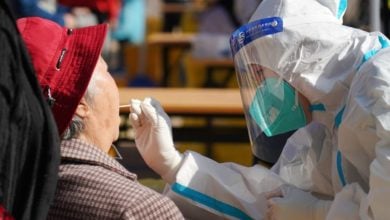How Experts Are Reaching Those Most Affected by Extreme Heat

As heat waves are longer and hotter across the globe, humans’ responses become more localized and specific.
Researchers and government officials have discovered that cool strategies are best for specific communities. It may be obvious that outside workers need cooling resources differently than teachers. But existing national and regional policies aren’t always that fine tuned—and they run the risk of wasting resources or missing the most vulnerable people.
To effectively deal with heat, the stakes are very high. The northern hemisphere has been hit with record heat waves this summer. These have tested the limits of Texas’s power grid, caused droughts in other parts of the Southwest, and ignited wildfires that could threaten the Mediterranean. Extreme temperatures can be very dangerous for your health. Heat stroke and acute heat exhaustion can be caused by severe heat. It also increases the likelihood of developing chronic diseases such as obesity, kidney disease, or other serious conditions. Climate change is causing temperatures to rise, and so does the number people that are exposed. The World Health Organization has estimated that between 2000-2016, the number people who were subject to heat waves increased by 125,000,000.
However, it is important to identify the most vulnerable people and understand their risks. Why?Their underlying risks are greater than other, which requires lots of detailed data. Take, for instance, one historical heat study from the U.K.—where, coincidentally, there’s a record-shattering heat wave happening right now—that analyzed temperature-related deaths between 2000 and 2019. London stands well above other areas of England and Wales for population-adjusted rates of excess heat mortality, as the chart below shows, due to the city’s “heat island effect” from the buildings and roads that absorb more heat than greener areas.
The thing is, not all Londoners are equally impacted, and this regional data, although striking, isn’t specific enough to point to the people who most need help. “Vulnerabilities can vary from one neighborhood to another, and city-level analyses tend to smooth everything out,” says Pierre Masselot, an environmental epidemiology research fellow at the London School of Hygiene and Tropical Medicine, who co-authored the study published this month in The Lancet Planetary Health.
Indeed, when the researchers plotted the mortality rates in 35,000 smaller areas across England and Wales, they found that significant differences exist within a region—and even within a city. London saw heat-related deaths ranging from 0.002 up to 10.7 per 100,000 year-olds (a figure that covers all of the years included in the study), while cold-related deaths ranged anywhere from 3.6-156 per 100,000 year-olds. For the heat mortality, the risk was lowest in a small area within the city’s borough of Islington while the highest was within the borough of Tower Hamlets—an area known for its high immigrant population, where about a third of residents are Bangladeshi according to government statistics.

High-resolution maps showing the locations of heat-related deaths in England, Wales and London are shown (top and bottom).
Gasparrini et al. / The Lancet Planetary Health
This level of detail allowed researchers to look for correlations between 15 variables such as the socioeconomic composition of the community (e.g., income, age, population density) and neighbor metrics like age of buildings, vegetation and accessibility to housing and other services. High heat mortality rates were seen in highly urbanized and economically poor areas.
With that data, it’s easier to curate solutions that might range from “warning systems triggered in specific hot or cold periods, to more structural interventions regarding, for instance, urban planning or insulation of buildings,” says the report’s lead author, Antonio Gasparrini, a professor of biostatistics and epidemiology at the London School of Hygiene and Tropical Medicine.
That’s not to say we should get rid of national-level policies. A labor-rules report from the Natural Resources Defense Council shows that countries all over the world have instituted work restrictions, fines for employers, and other measures to reduce heat exposure. Last September saw the White House launch a series of initiatives, including opening cooling rooms in schools and establishing workplace heat standards. These efforts are worthy of national standards.
Learn more 5 Reasons Why the U.K. Was Not Built For Extreme Heat
To make them pay, programs that aim to improve buildings and plant trees in urban areas must be targeted. In the U.S., Miami-Dade county is developing initiatives based on very specific data tied to heat-related hospitalizations and emergency department visits by patients’ zip codes. To create heat vulnerability maps, researchers have combined hospital records data with heat sensor readings and shrub and tree cover.
“The things that we found that were highly correlated were a high poverty rate percentage, high land surface temperatures, high percentage of outdoor workers, and, finally, families with children under 18,” says Jane Gilbert, the county’s Chief Heat Officer. “We created a marketing campaign for those demographics in those zip codes.” That education campaign warned people about the adverse effects of extreme heat and listed strategies and resources for keeping cool. This marketing campaign included advertising posters in targeted bus shelters, municipal buildings and social media spots.

In bus shelters throughout Miami-Dade County, posters were posted to inform the public about ways to beat heat.
Courtesy Miami-Dade County
This weekend, 2,700 trees were distributed by the county to property owners who received a direct mailing alert about the giveaway. Around 2,400 trees were distributed to 1,200 homes. Rest were given to charities. “We’re trying to get to 30% tree canopy, but really prioritizing those areas with the highest need,” Gilbert says.
In Phoenix, the city’s Heat Response and Mitigation Office has taken a similar approach. For its tree planting efforts, the city is tapping into data about people’s walking habits. This allows it to target the streets where the greatest number of people are walking and can shade their trees. David Hondula is the head of this department. He says that hyper-local data may be incomplete and misses unsheltered populations which are difficult to track. Static data is only a beginning point to make sure there are no blindspots, says Hondula. Researchers and politicians can only understand heat vulnerability in its entirety if they engage with the communities.
Hondula, for example, attended a community meeting as part of a city plan to improve shaded areas surrounding bus stops. Hondula learned that one resident wanted shade at the stop, even though it was not connected with any city bus route. “I knew there was no bus stop. I knew it, I was the expert,” he recalls. As the conversation progressed it was clear that the resident This was referring to a bus stop—a school bus stop, not a city bus stop.
“It was outside of our frame of thinking for shade investments. School bus stops are a completely different type of data that we just didn’t have our minds around,” he says. “It was a really clear example of how a community’s understanding of the problem can help shape, and grow, and mature our expert understanding of the problem.”
Read More From Time





